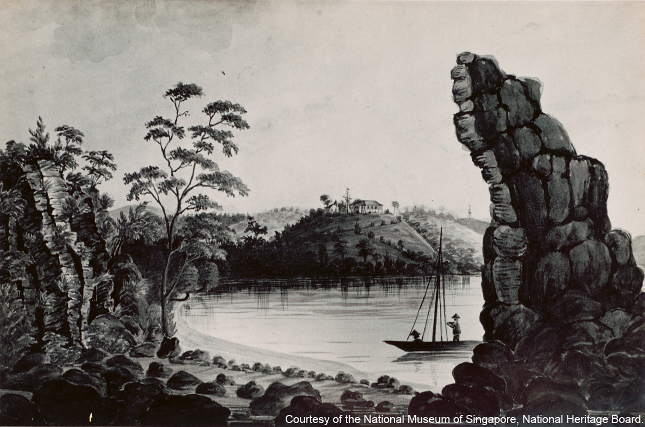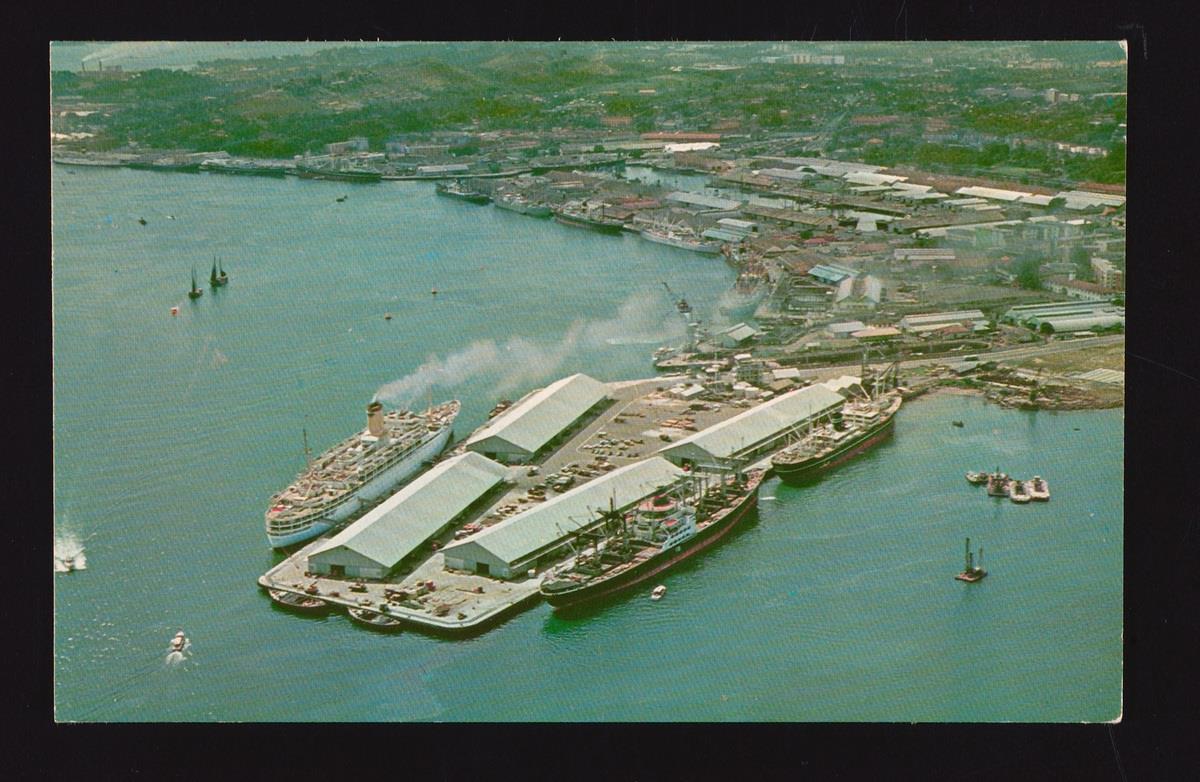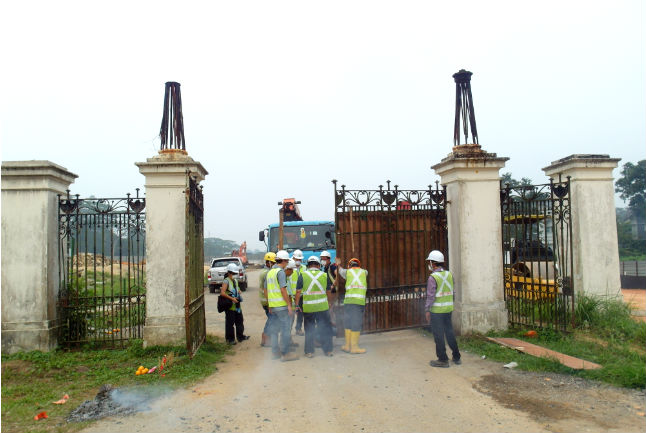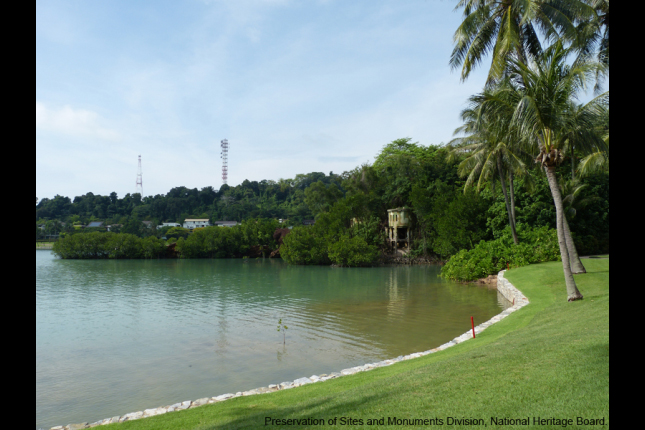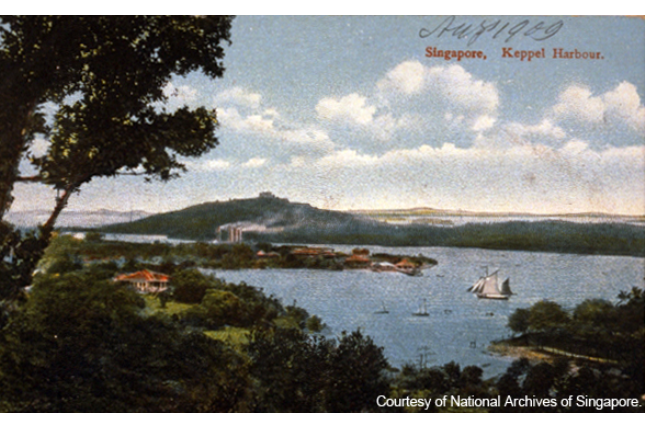A craggy granite rock outcrop known in Malay as "Batu Berlayar" ("Sailing Rock") used to stand on this shore. Another rock outcrop also used to stand on the opposite shore of Tanjong Rimau on Sentosa Island. These two rock outcrops formed a gateway at the western entrance to Keppel Harbour. They were the navigational aids to sailors and Mariners sailing through the swift flowing waters of the narrow channels between them,
British Sailors name the more prominent "Batu Berlayar" "Lot's Wife" in references to the biblical story of the wife of Abraham's nephew. She was turned into a pillar of salt when she disobeyed divine orders not to look back at the destruction of Sodom, which she was allowed to flee from.
Seven Hundred years ago, the ancient mariner and trader Wang Da Yaun is said to have sailed through this passageway. In his travelogue, he recorded that the Fujian mariners knew these two rock outcrops as "Lung Ya Men" or "Dragon's Teeth Gate" because they reminded the mariners of the two pegs at the bow of their ships. These two pegs were known to the mariners as "Dragon's Teeth".
"Sailing Rock", "Lots's Wife" and perhaps "Dragon's Teeth Gate" were names that indicated that the Keppel passageway was used by Asian and early European sailors and traders for hundreds of years to sail past Singapore. The passageway was however abandoned and forgotten from the seventeenth century when modern European sailors prefer the wider and more open Main Straits south of Pulau Satamu on which Raffles Lighthouse stands today. Stamford Raffles did not know of "Lot's Wife" or the deep water harbour it led to when he landed in Singapore in January in 1819. It was William Farquhar, the Resident administrator, who wrote to Raffles then in Bencoolen, on 2 September 1819, that he had found "a new harbour to the west of the settlement".
The two rocks were blown up by the Straits Settlement Surveyor, John Thompson, in August 1848 to widen the entrance to this "new habour".




